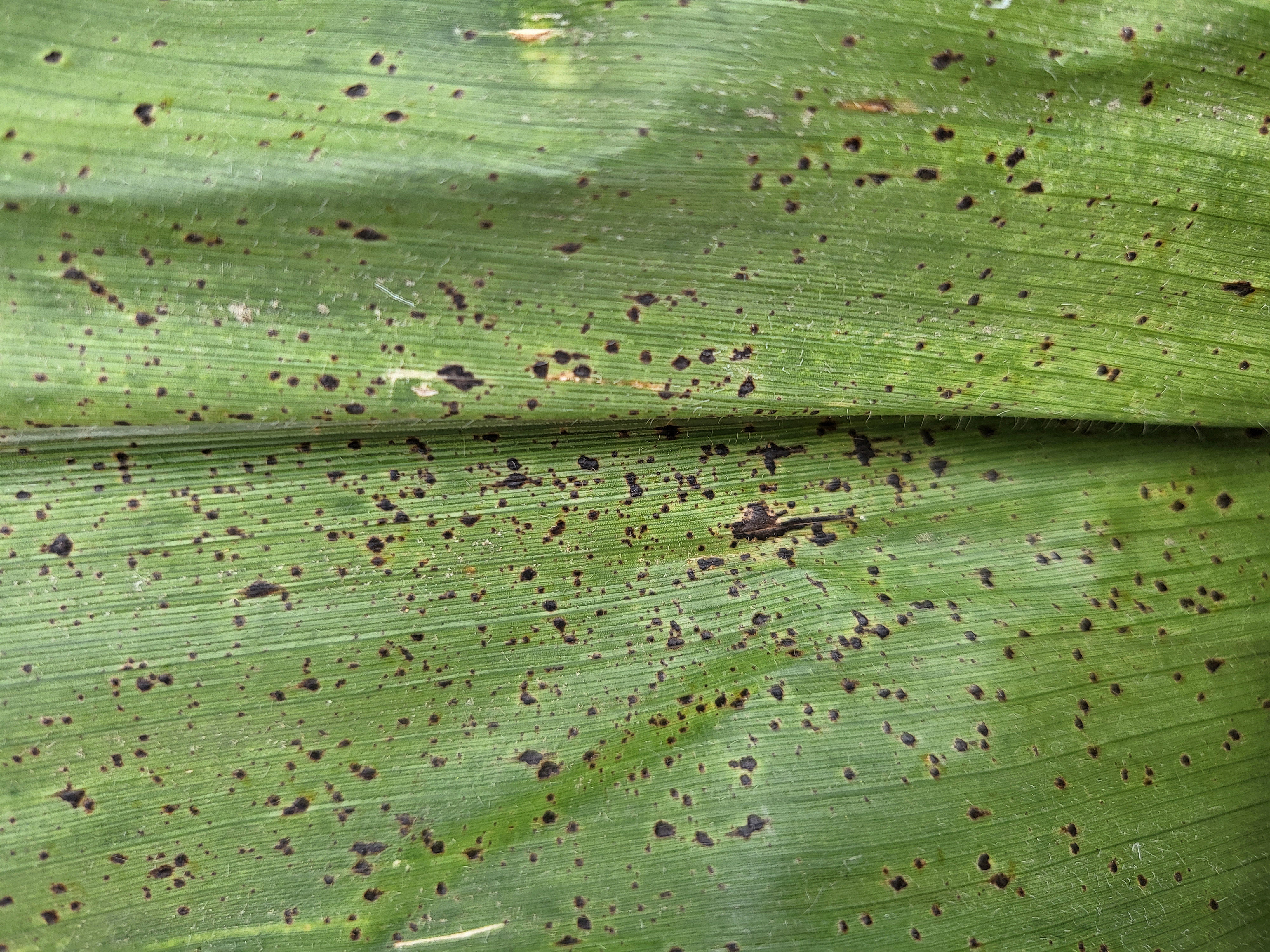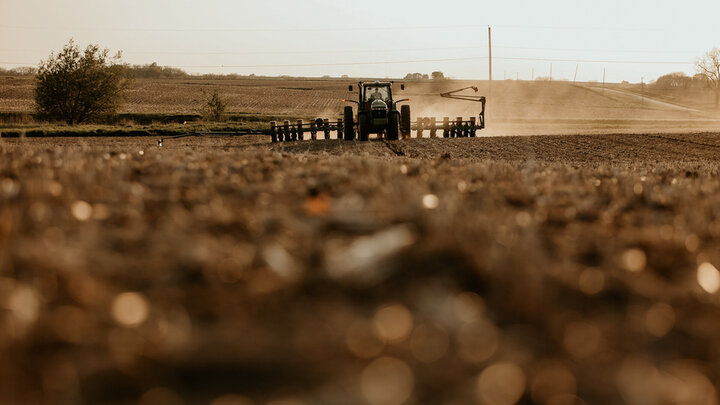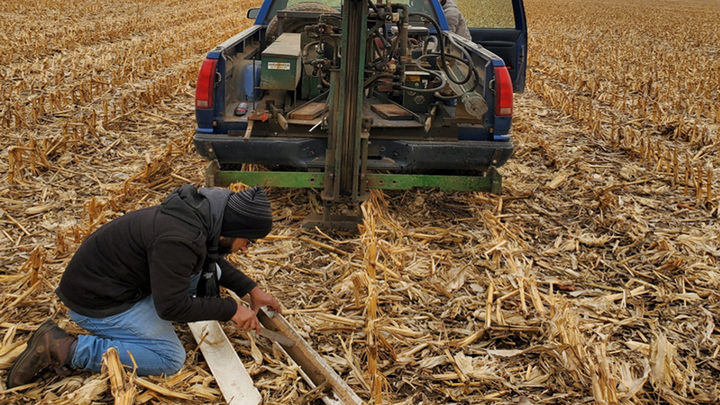By Tamra Jackson, Extension Plant Pathologist
Pathogen
Goss's bacterial wilt and leaf blight was first identified in three fields in Dawson County near Lexington in 1969. Over the next several years the disease was identified in Kansas, Colorado, Wyoming, South Dakota, Iowa and since then in Illinois and Wisconsin. Until recent years the disease has not been a serious problem, but has re-emerged, particularly in the tri-state region of western Nebraska, northeast Colorado, and southeast Wyoming.
Symptoms
The causal agent is Clavibacter michiganensis subsp. nebraskensis and is one of only several plant diseases caused by a Gram positive bacterium. The pathogen can cause two major types of symptoms, a systemic wilt and leaf blight. The leaf blight phase of the disease is the most common and can cause the development of lesions with wavy margins similar to some other diseases.
Two characteristics can be used to distinguish it from other diseases. The first identifiable characteristic is the development of dark green to black discontinuous water-soaked spots, sometimes called "freckles" because of their appearance (photo), near the edges of expanding lesions. The bacteria can also create an exudate or ‘ooze' on the surfaces of the leaf which is the second identifiable characteristic. When dried the exudate may glisten and appear shiny on the leaf surface similar to varnish (photo). The disease can also have a systemic wilt phase in which the bacteria infect the vascular system and move within the plant. Infection may cause discoloration of the water-conducting elements (photo) and eventually a slimy stalk rot that can lead to wilting and plant death (photo).


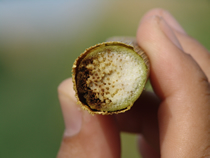
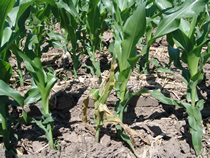
Epidemiology
The pathogen overwinters on the soil surface in infested residue, which serves as the primary inoculum source for future corn crops. Injury to leaves is required for pathogen infection, especially that caused by hail, sand blasting, or heavy wind. The pathogen can also be seed borne and seed transmitted, but transmission to seedlings has been demonstrated at low rates and is not believed to be a major source of infection except that it can provide the inoculum for introduction into new locations.
Management
Genetic Resistance
Use of partially resistant hybrids is the most practical means of disease control. However, resistance does not imply immunity from disease, but yield losses should be reduced compared to that in susceptible cultivars.
Cultural Practices
Since the bacterium survives in infested residue, any type of tillage operation that buries residue to encourage decomposition may be effective in reducing the rate of new infections. Rotating out of corn into other crops such as soybean, dry bean, small grains, or alfalfa will help reduce primary inoculum sources in corn residue, but none of which will completely eliminate the bacteria. Additional hosts for the pathogen include green foxtail, shatter cane, and barnyard grass, therefore weed control may also be important for disease control.
Links
For additional information, see the UNL Extension NebGuide, Goss's Bacterial Wilt and Leaf Blight of Corn.
